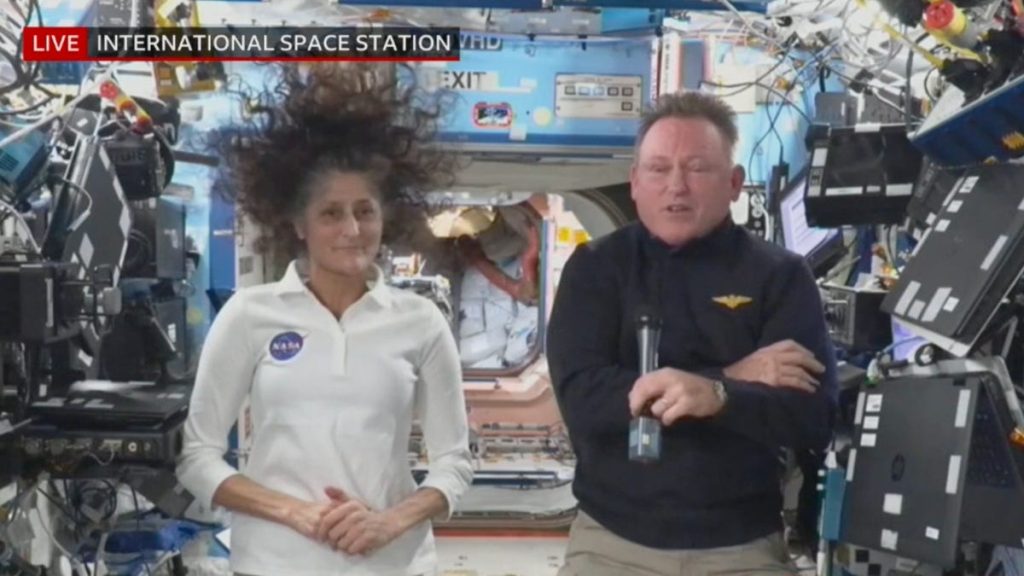Astronauts Sunita “Suni” Williams and Barry “Butch” Wilmore, seasoned veterans of the US Navy and NASA’s astronaut corps, embarked on what was intended to be an eight-day mission to the International Space Station (ISS) in June 2023. Their mission, aboard Boeing’s Starliner capsule, was a crucial test flight for this new spacecraft, designed to provide NASA with an alternative crew transportation option to and from the ISS. This reliance on private companies like Boeing marks a significant shift in NASA’s human spaceflight strategy. However, a series of technical glitches, including helium leaks and thruster malfunctions, ultimately led to a dramatic extension of their stay, stranding them on the ISS until their scheduled return in early 2025.
Despite the unexpected turn of events, Williams and Wilmore have embraced their extended mission with remarkable positivity. Both astronauts have extensive prior experience in space. Williams holds the former record for most spacewalks and cumulative spacewalk time by a woman, and even completed a marathon in space in 2007. Wilmore piloted the Space Shuttle Atlantis to the ISS in 2009 and participated in the groundbreaking 3D printing of a tool in space in 2014. This wealth of experience has undoubtedly prepared them for the challenges and opportunities presented by their prolonged time in orbit. They have integrated seamlessly into the existing ISS crew, contributing to over 60 scientific studies, ranging from botany experiments to other ongoing research projects.
Life aboard the ISS presents unique challenges and experiences. Fresh food supplies arrive every three months, a testament to the logistical complexities of sustaining human life in space. A recent resupply mission brought not only essential provisions but also an unexpected odor and small droplets, prompting a temporary closure of the hatch between the Russian segment and the Progress cargo spacecraft. Although air quality quickly returned to normal levels, the incident highlights the delicate balance of life support systems on the ISS. The astronauts’ diet, consisting of a mix of processed and rehydratable foods, has also drawn attention, with some observers commenting on their apparent weight loss. NASA has addressed these concerns, emphasizing that crew health is closely monitored and that each astronaut follows a personalized diet and exercise plan.
The original plan was for Williams and Wilmore to return to Earth on the Starliner. However, due to the technical issues encountered during the initial flight, the capsule returned uncrewed as a safety precaution. This decision underscores NASA’s unwavering commitment to crew safety as a paramount concern. A SpaceX Dragon capsule, which docked with the ISS in late September 2023, will now serve as their return vehicle. This shift to a SpaceX vehicle further highlights the increasing role of private companies in space exploration. Two other crew members, astronaut Nick Hague and cosmonaut Aleksandr Gorbunov, arrived on the Dragon and will join Williams and Wilmore on the return journey.
The extended stay of Williams and Wilmore has necessitated adjustments to the existing ISS crew rotations. Two astronauts originally slated to launch on the Dragon remained on Earth to accommodate Williams and Wilmore’s return trip. This exemplifies the flexibility and adaptability required in space missions, where unforeseen circumstances can necessitate rapid changes to pre-existing plans. Despite being far from home and facing an unexpected extension to their mission, both astronauts have maintained a positive outlook. They have emphasized the unique experience of living and working in space, expressing gratitude for the opportunity and downplaying any inconveniences.
The saga of Williams and Wilmore’s extended ISS stay underscores both the inherent risks and the remarkable resilience of human spaceflight. The initial technical issues with the Starliner, Boeing’s competitor to SpaceX’s proven Dragon capsule, highlight the challenges of developing and deploying new space technologies. However, the astronauts’ adaptability, the support of ground control, and the collaborative nature of international space partnerships have enabled them to not only persevere but to continue contributing valuable scientific research in the unique environment of the ISS. Their extended mission serves as a testament to the human spirit of exploration and the ongoing quest to push the boundaries of our understanding of space.

